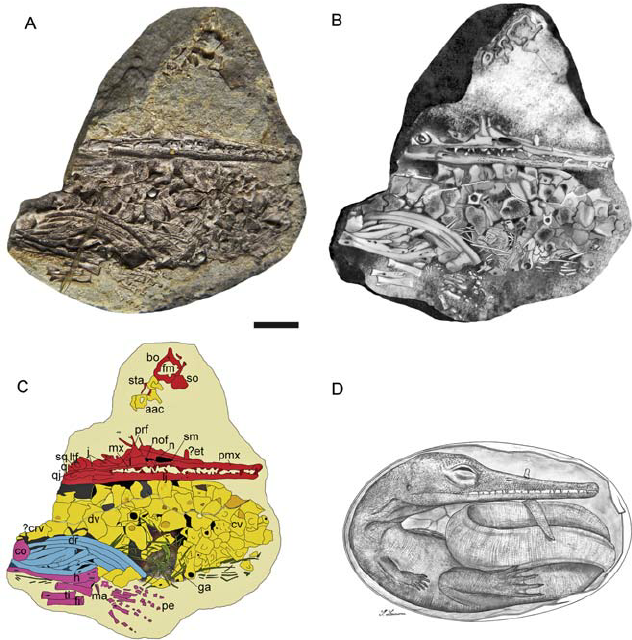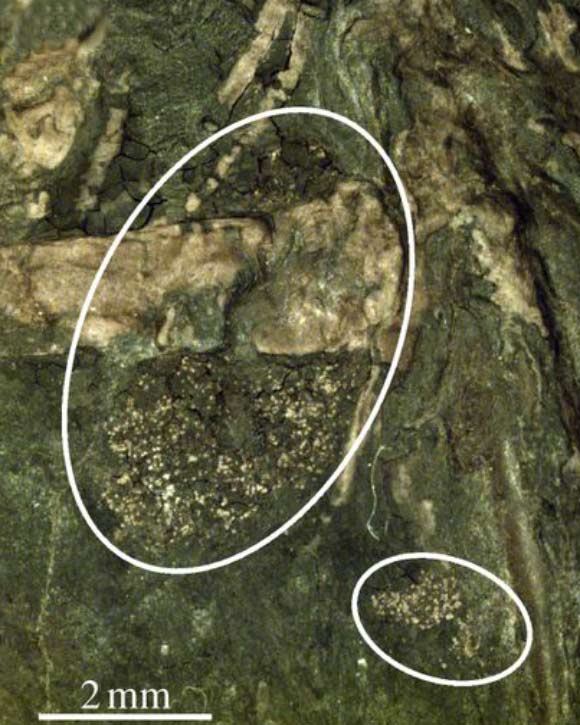Who: Triarthrus eatoni
Lagerstätte: Beecher’s Trilobite Bed (Ordovician, New York)
What: These trilobites are preserved through pyritization which gives them a golden hue. An underwater avalanche, called a turbidity current, carried the trilobites into deep waters and buried them. The shock of the cold water killed them. Anaerobic bacteria within the soil reacted to the influx of sudden food and began to feed on them. As they feed, they released hydrogen sulfide which reacted with the soil’s iron and produced pyrite. The pyrite replaced the organic tissues preserving the legs, antennae, and internal organs. This makes these trilobites highly valuable in understanding what they looked like as most trilobite fossils do not have these soft body parts.
References:
Briggs, Derek EG, Simon H. Bottrell, and Robert Raiswell. “Pyritization of soft-bodied fossils: Beecher’s trilobite bed, Upper Ordovician, New York State.” Geology 19.12 (1991): 1221-1224
If you would like to learn more check out my episode on Beecher’s Trilobite Bed: https://www.buzzsprout.com/1414057/5868751-beecher-s-trilobite-bed.mp3?blob_id=24181264&download=true







